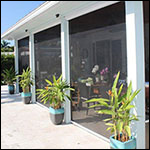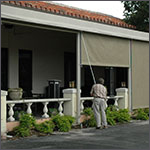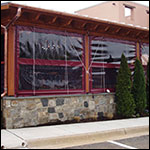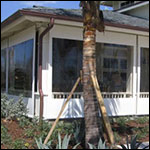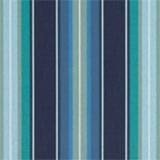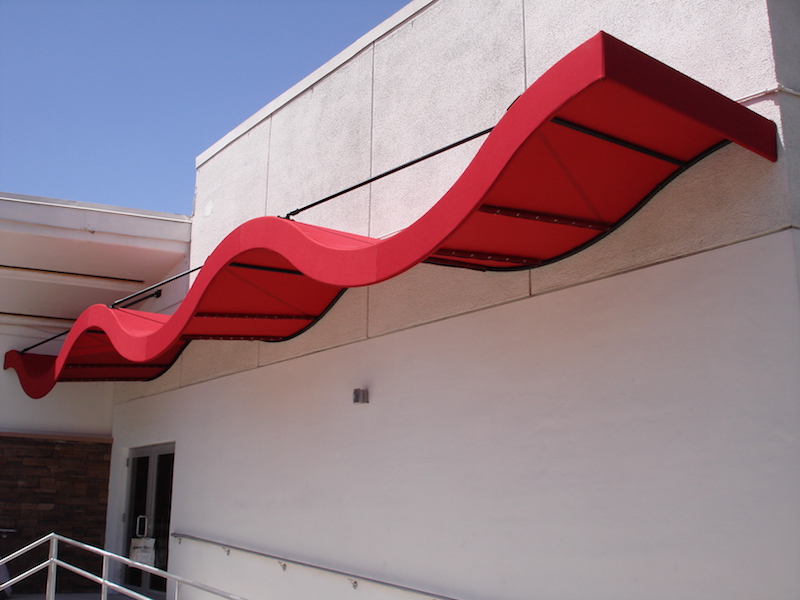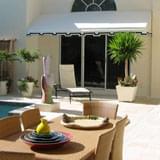Although fabric curtain systems are designed to enclose most any area, caution should be exercised in extreme weather conditions as nothing short of a concrete wall is designed for heavy winds.
Fabrics
In general, just about any acrylic, vinyl or shade fabric (assuming the fabric has some dimensional stability) can be used with most curtain systems. Because fabric curtains are typically used for element protection of one sort or another, many customers opt to have clear vinyl inserts (like windows) placed into the center of vinyl curtains or utilize all mesh curtains.
Although tinted glass can offer some sun protection, Clear Vinyl Insert Curtains are perfect when a customer wants to block rain and wind or retain heat or cool air in a designated area.
When the requirement is for sun protection only, mesh fabrics are typically the best option because they can block 98% of the sun’s rays, retain some view through the fabric and still allow the protected area to breathe as opposed to remaining stagnant from low air circulation.

